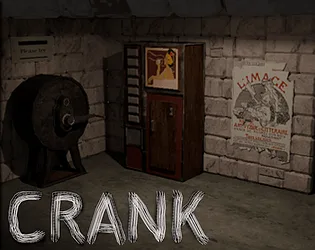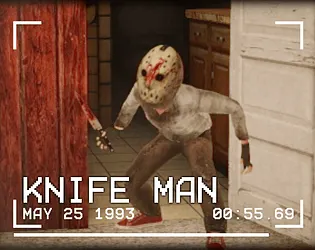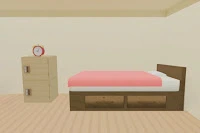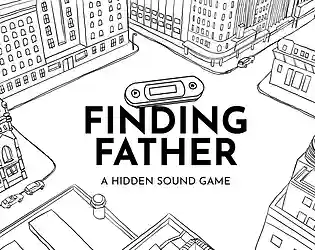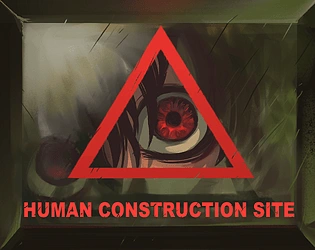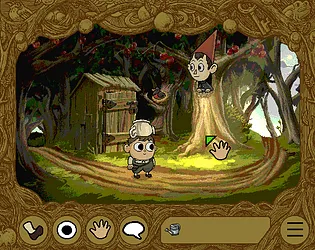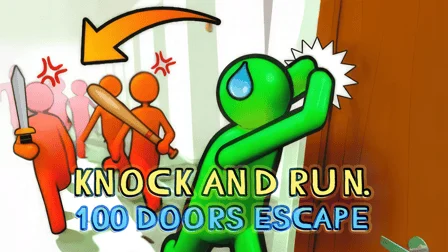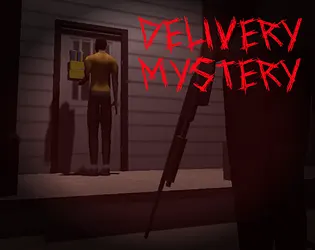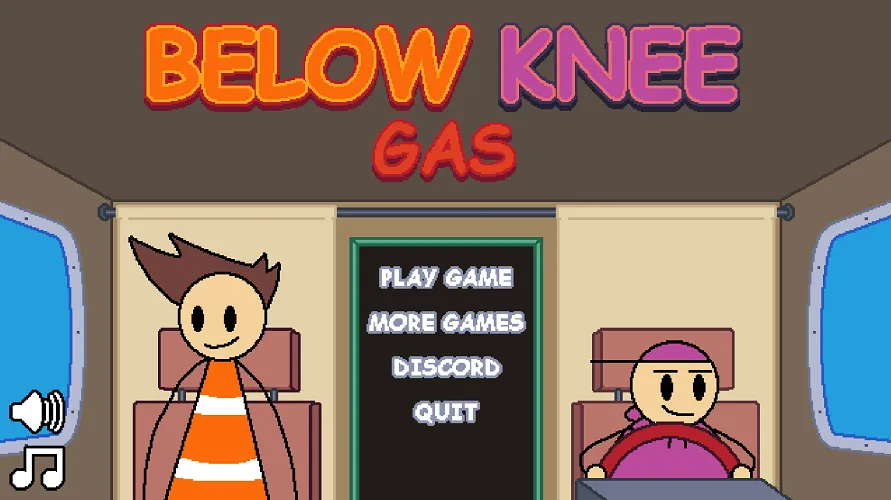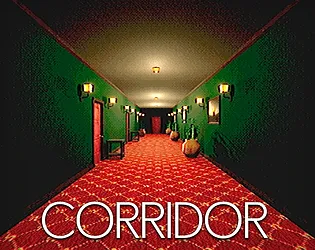
Corridor
Spot anomalies in an endless hallway to find your escape in this puzzle horror
Corridor
Corridor — Escape the Endless Hallway by Spotting What's Wrong

Corridor puts you in a seemingly infinite hallway where nothing is quite right. Inspired by the viral sensation The Exit 8, this puzzle horror game challenges your observational skills and tests your nerves. Every door looks identical, but only one leads forward—and you'll only find it by spotting the subtle (and sometimes not-so-subtle) anomalies that surround you. Miss them, and you'll walk forever. Spot them all, and you might just escape.
🎮 What is Corridor?
Corridor is a short but intense puzzle horror experience built around a deceptively simple premise: you're trapped in an endless hallway, and you need to find your way out. Each section of the hallway presents you with two doors. One leads you closer to freedom. The other sends you back to the beginning.
The key to choosing correctly? Observation. As you walk through each hallway segment, you must carefully examine your surroundings for anomalies—things that shouldn't be there, things that have changed, things that feel wrong. These anomalies are clues. When you spot them, you know something is different, and that difference tells you which door to take.
But here's the twist: not every anomaly is a clue. Some exist purely to distract you, to make you second-guess yourself, to lead you down the wrong path. Learning which anomalies matter and which are red herrings is part of the challenge.
The atmosphere in Corridor is deliberately unsettling. The lighting is dim. The hallway stretches endlessly. Strange sounds echo around you. Every footstep feels heavier as you realize you might be walking in circles, never escaping, forever trapped in this liminal nightmare.
The game draws heavy inspiration from The Exit 8, but adds its own unique anomalies and environmental details that keep players constantly vigilant. You'll question every shadow, every sound, every subtle shift in the environment, knowing that one missed detail could condemn you to walk the corridor forever.
🕹️ How to Play Corridor
Corridor features straightforward first-person controls that let you focus entirely on observation and decision-making:
Controls
Desktop:
- WASD – Move forward, backward, and strafe left/right through the hallway
- Left Mouse Button (LMB) – Interact with doors and objects
- Right Mouse Button (RMB) – Zoom in to examine details more closely
- Shift – Run (when you're confident about your path)
- ESC – Pause the game
Mobile/Tablet:
- Touch controls – On-screen buttons for movement and interaction
- Tap – Interact with doors and examine objects
- Pinch to zoom – Get a closer look at suspicious details
Gameplay Mechanics
- Walk through the hallway – Move forward carefully, observing everything around you
- Spot anomalies – Look for anything out of place: objects that moved, lights that flickered, sounds that changed
- Decide which door to take – If you spotted anomalies, choose the door indicated by the clues
- Progress or reset – The right door advances you; the wrong door sends you back to the start
- Zoom when needed – Use the zoom function to examine distant or subtle details
- Repeat until escape – Keep identifying anomalies and choosing correctly until you find the exit
Strategy Tips
- Move slowly on first runs – Don't rush; anomalies can be subtle
- Use the zoom function liberally – Small details matter, and zooming reveals things you might miss
- Listen carefully – Audio anomalies are just as important as visual ones
- Memorize the "normal" state – Understanding what the hallway usually looks like helps you spot changes
- Don't trust every anomaly – Some are distractions meant to mislead you
- Take mental notes – Remember which anomalies led to correct doors in previous attempts
📸 Corridor Gameplay Walkthrough
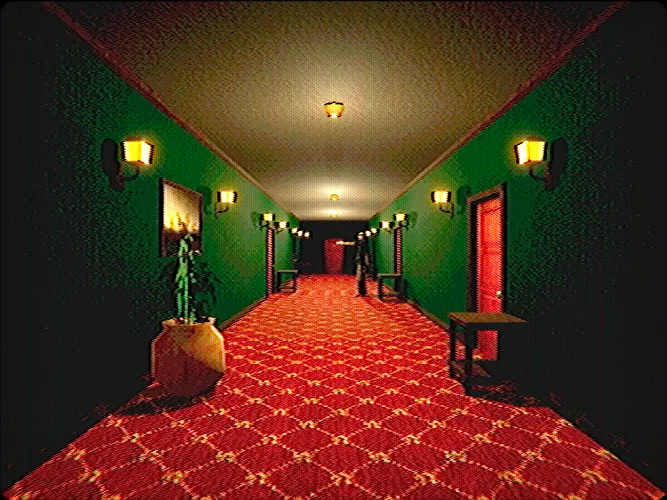
🚪 The First Hallway
When you first enter Corridor, the hallway appears normal—or at least, as normal as an endless, dimly lit corridor can be. Fluorescent lights flicker overhead. The walls are plain. Two doors wait at the end.
Your first walk through establishes the baseline. What does this hallway normally look like? What sounds do you hear? What objects are present? This mental snapshot becomes your reference point for detecting anomalies in subsequent runs.
Early anomalies tend to be more obvious: a picture frame hanging crooked, a light that's completely off when it should be on, a door that's slightly ajar. The game is teaching you to observe, training your eye to catch differences.
If you spot an anomaly, you know something has changed—and that usually means you should take a specific door. But which one? Learning the pattern is part of the puzzle.
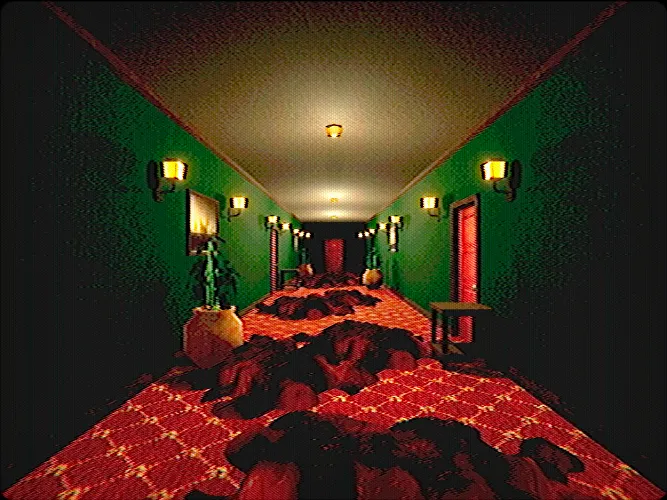
👁️ Spotting Subtle Changes
As you progress deeper into Corridor, the anomalies become more subtle and more sinister. Instead of obvious changes like missing objects, you'll encounter:
- Lighting shifts – Shadows that shouldn't be there, lights flickering in unusual patterns
- Object displacement – Items moved a few inches from their original position
- Texture anomalies – Walls that look slightly different, patterns that don't quite match
- Audio cues – Distant sounds, footsteps, breathing that wasn't there before
- Atmospheric changes – The air feels different, the temperature seems to drop
This is where the zoom function becomes essential. You might need to examine distant objects closely to determine if they've changed. A chair that's slightly rotated. A ceiling tile that's askew. A reflection in a window that shows something impossible.
The psychological tension ramps up here. Every hallway segment makes you question whether you saw something real or imagined it. Did that picture actually move, or are you seeing things because you expect anomalies?
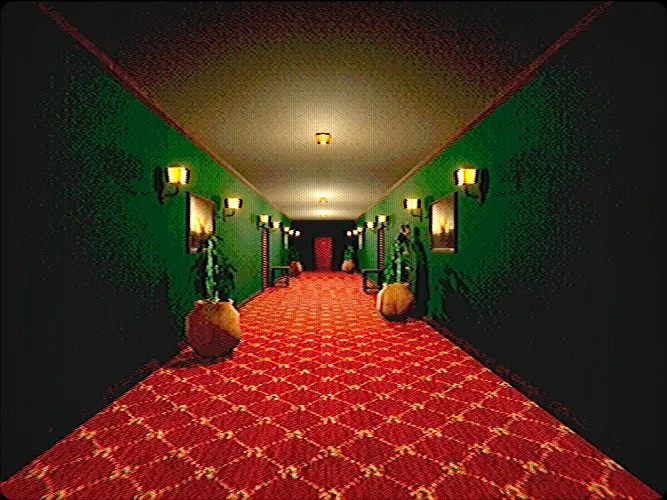
🎭 False Anomalies and Misdirection
Corridor doesn't play fair—and that's intentional. Not every anomaly you spot is a legitimate clue. Some exist purely to test your judgment:
- Consistent anomalies – Changes that appear in every hallway segment, making them the new "normal"
- Atmospheric distractions – Creepy sounds or visuals that don't actually indicate which door to choose
- Ambiguous changes – Anomalies that could be interpreted multiple ways
- Psychological tricks – Things that seem wrong but are actually correct
Learning to distinguish between meaningful anomalies and red herrings is the difference between escaping and wandering forever. You need to develop a sense for which changes matter and which are just atmospheric noise.
This stage tests not just your observation skills but your confidence. Do you trust what you see? Do you follow your instinct, or do you second-guess yourself? In Corridor, both overconfidence and excessive doubt can trap you.
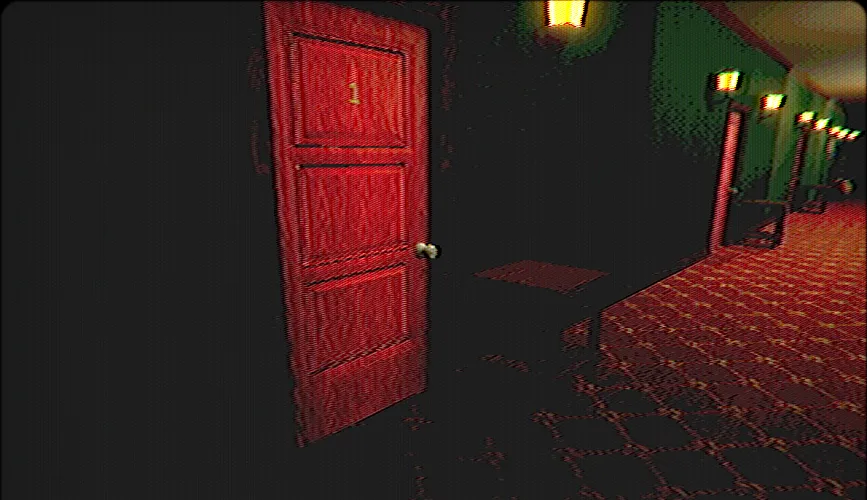
🏁 The Final Stretch
If you've made it this far in Corridor, you've proven your observational skills. The final sections combine everything you've learned: subtle visual anomalies, misleading audio cues, false clues, and legitimate hints all mixed together.
The hallway might start breaking down—walls cracking, lights malfunctioning more severely, impossible geometry appearing. These late-game segments blur the line between horror and puzzle, creating an atmosphere where you're no longer sure what's real.
But if you stay focused, if you remember the patterns you've learned, if you trust your ability to distinguish real clues from distractions, you'll eventually reach the true exit. The door that doesn't loop back. The door that leads to freedom.
And when you finally step through it, emerging from the endless corridor, there's a profound sense of relief—mixed with the lingering question: Was I really trapped, or did the corridor just want me to think I was?
Corridor proves that horror doesn't need jump scares or monsters. Sometimes, the scariest thing is realizing you might be walking in circles forever, trapped by your own inability to see what's right in front of you.
Corridor — Escape the Endless Hallway by Spotting What's Wrong

Corridor puts you in a seemingly infinite hallway where nothing is quite right. Inspired by the viral sensation The Exit 8, this puzzle horror game challenges your observational skills and tests your nerves. Every door looks identical, but only one leads forward—and you'll only find it by spotting the subtle (and sometimes not-so-subtle) anomalies that surround you. Miss them, and you'll walk forever. Spot them all, and you might just escape.
🎮 What is Corridor?
Corridor is a short but intense puzzle horror experience built around a deceptively simple premise: you're trapped in an endless hallway, and you need to find your way out. Each section of the hallway presents you with two doors. One leads you closer to freedom. The other sends you back to the beginning.
The key to choosing correctly? Observation. As you walk through each hallway segment, you must carefully examine your surroundings for anomalies—things that shouldn't be there, things that have changed, things that feel wrong. These anomalies are clues. When you spot them, you know something is different, and that difference tells you which door to take.
But here's the twist: not every anomaly is a clue. Some exist purely to distract you, to make you second-guess yourself, to lead you down the wrong path. Learning which anomalies matter and which are red herrings is part of the challenge.
The atmosphere in Corridor is deliberately unsettling. The lighting is dim. The hallway stretches endlessly. Strange sounds echo around you. Every footstep feels heavier as you realize you might be walking in circles, never escaping, forever trapped in this liminal nightmare.
The game draws heavy inspiration from The Exit 8, but adds its own unique anomalies and environmental details that keep players constantly vigilant. You'll question every shadow, every sound, every subtle shift in the environment, knowing that one missed detail could condemn you to walk the corridor forever.
🕹️ How to Play Corridor
Corridor features straightforward first-person controls that let you focus entirely on observation and decision-making:
Controls
Desktop:
- WASD – Move forward, backward, and strafe left/right through the hallway
- Left Mouse Button (LMB) – Interact with doors and objects
- Right Mouse Button (RMB) – Zoom in to examine details more closely
- Shift – Run (when you're confident about your path)
- ESC – Pause the game
Mobile/Tablet:
- Touch controls – On-screen buttons for movement and interaction
- Tap – Interact with doors and examine objects
- Pinch to zoom – Get a closer look at suspicious details
Gameplay Mechanics
- Walk through the hallway – Move forward carefully, observing everything around you
- Spot anomalies – Look for anything out of place: objects that moved, lights that flickered, sounds that changed
- Decide which door to take – If you spotted anomalies, choose the door indicated by the clues
- Progress or reset – The right door advances you; the wrong door sends you back to the start
- Zoom when needed – Use the zoom function to examine distant or subtle details
- Repeat until escape – Keep identifying anomalies and choosing correctly until you find the exit
Strategy Tips
- Move slowly on first runs – Don't rush; anomalies can be subtle
- Use the zoom function liberally – Small details matter, and zooming reveals things you might miss
- Listen carefully – Audio anomalies are just as important as visual ones
- Memorize the "normal" state – Understanding what the hallway usually looks like helps you spot changes
- Don't trust every anomaly – Some are distractions meant to mislead you
- Take mental notes – Remember which anomalies led to correct doors in previous attempts
📸 Corridor Gameplay Walkthrough

🚪 The First Hallway
When you first enter Corridor, the hallway appears normal—or at least, as normal as an endless, dimly lit corridor can be. Fluorescent lights flicker overhead. The walls are plain. Two doors wait at the end.
Your first walk through establishes the baseline. What does this hallway normally look like? What sounds do you hear? What objects are present? This mental snapshot becomes your reference point for detecting anomalies in subsequent runs.
Early anomalies tend to be more obvious: a picture frame hanging crooked, a light that's completely off when it should be on, a door that's slightly ajar. The game is teaching you to observe, training your eye to catch differences.
If you spot an anomaly, you know something has changed—and that usually means you should take a specific door. But which one? Learning the pattern is part of the puzzle.

👁️ Spotting Subtle Changes
As you progress deeper into Corridor, the anomalies become more subtle and more sinister. Instead of obvious changes like missing objects, you'll encounter:
- Lighting shifts – Shadows that shouldn't be there, lights flickering in unusual patterns
- Object displacement – Items moved a few inches from their original position
- Texture anomalies – Walls that look slightly different, patterns that don't quite match
- Audio cues – Distant sounds, footsteps, breathing that wasn't there before
- Atmospheric changes – The air feels different, the temperature seems to drop
This is where the zoom function becomes essential. You might need to examine distant objects closely to determine if they've changed. A chair that's slightly rotated. A ceiling tile that's askew. A reflection in a window that shows something impossible.
The psychological tension ramps up here. Every hallway segment makes you question whether you saw something real or imagined it. Did that picture actually move, or are you seeing things because you expect anomalies?

🎭 False Anomalies and Misdirection
Corridor doesn't play fair—and that's intentional. Not every anomaly you spot is a legitimate clue. Some exist purely to test your judgment:
- Consistent anomalies – Changes that appear in every hallway segment, making them the new "normal"
- Atmospheric distractions – Creepy sounds or visuals that don't actually indicate which door to choose
- Ambiguous changes – Anomalies that could be interpreted multiple ways
- Psychological tricks – Things that seem wrong but are actually correct
Learning to distinguish between meaningful anomalies and red herrings is the difference between escaping and wandering forever. You need to develop a sense for which changes matter and which are just atmospheric noise.
This stage tests not just your observation skills but your confidence. Do you trust what you see? Do you follow your instinct, or do you second-guess yourself? In Corridor, both overconfidence and excessive doubt can trap you.

🏁 The Final Stretch
If you've made it this far in Corridor, you've proven your observational skills. The final sections combine everything you've learned: subtle visual anomalies, misleading audio cues, false clues, and legitimate hints all mixed together.
The hallway might start breaking down—walls cracking, lights malfunctioning more severely, impossible geometry appearing. These late-game segments blur the line between horror and puzzle, creating an atmosphere where you're no longer sure what's real.
But if you stay focused, if you remember the patterns you've learned, if you trust your ability to distinguish real clues from distractions, you'll eventually reach the true exit. The door that doesn't loop back. The door that leads to freedom.
And when you finally step through it, emerging from the endless corridor, there's a profound sense of relief—mixed with the lingering question: Was I really trapped, or did the corridor just want me to think I was?
Corridor proves that horror doesn't need jump scares or monsters. Sometimes, the scariest thing is realizing you might be walking in circles forever, trapped by your own inability to see what's right in front of you.
Release date
Developer
Platform
